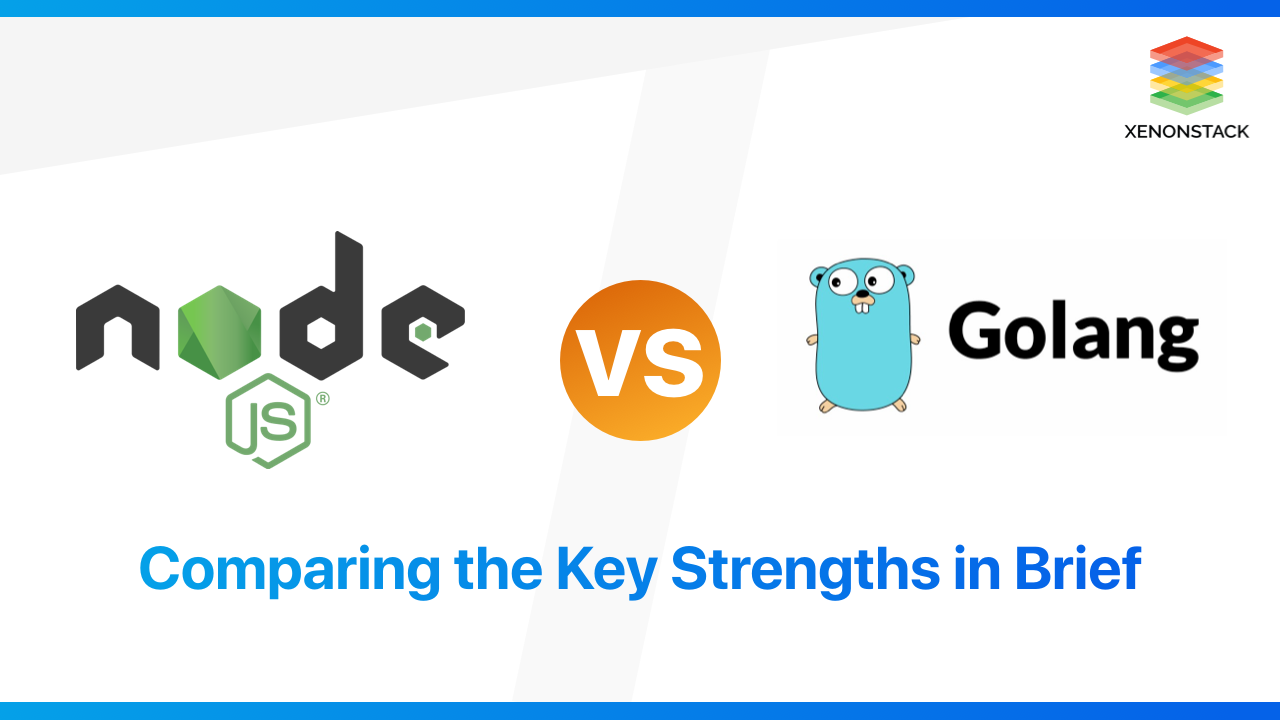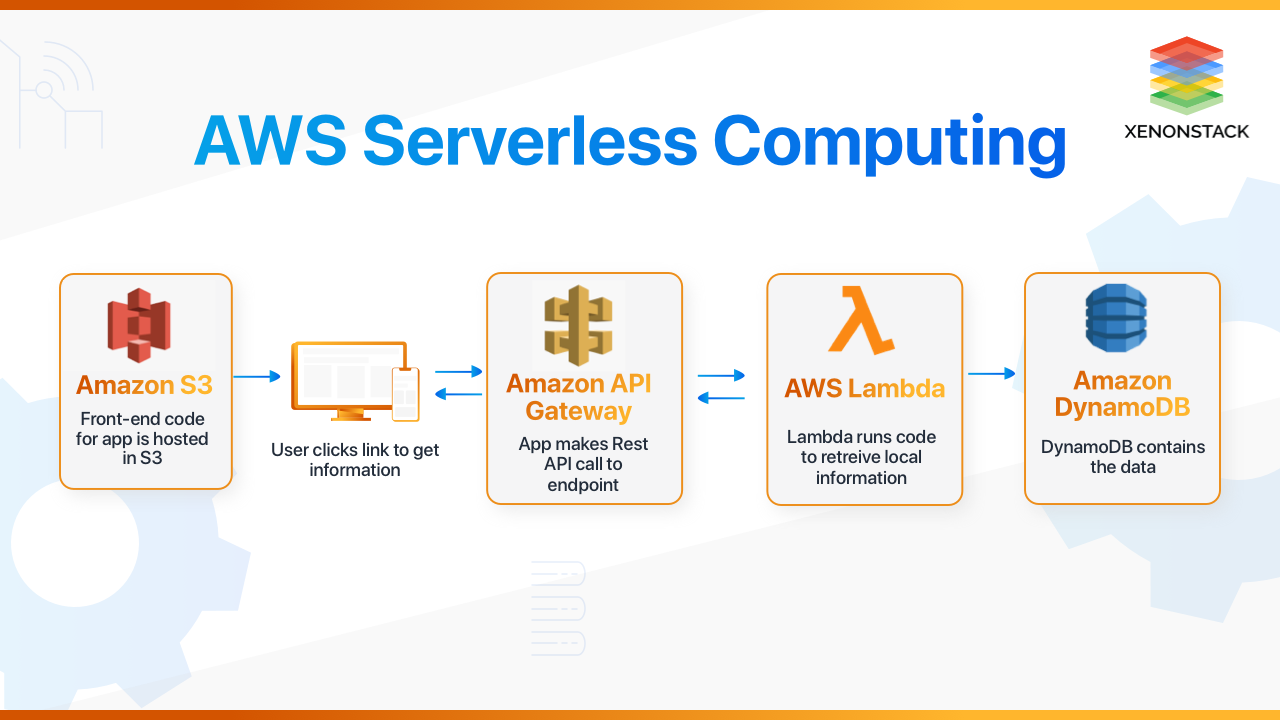
What is NODE.js?
NodeJs is an open-source, server-side runtime atmosphere established on Google Chrome's V8 JavaScript transformer. Considering its intro in 2009, NodeJS has graced the most successful environment to develop cross-platform. It emphasizes an event-driven, non-blocking (asynchronous) I/O pattern sketched to develop an extremely scalable server-side platform using JavaScript. NodeJS is written in JavaScript. So, it performs it easier for developers to communicate both client-side and server-side scripts utilizing a single language.
|
Pros |
Cons |
|
Used to build scalable Web applications |
Based on javaScript which is dynamically typed making it harder to debug |
|
Works well with MongoDB |
API;s used in Node undergo changes frequently |
|
Easy to learn |
Used asynchronous programming |
|
Helps to creates Highly Performance application |
|
|
Growing community |
What is GO?
Golang, usually known as Go, is an open-source, statically-typed, multi-purpose programming language built by Google in 2007. It contains a mixture of performance and security privileges of C/C++ and fasts as Python. Go is a structural, strong, and efficient method of managing simultaneous programming and is favored for its good garbage collection handling, memory safety, and compelling interfaces.
Not strongly suggested for websites, Go works great for cloud-based interfaces, networking applications, real-time application platforms, and microservices.
|
Pros |
Cons |
| Easy to Maintains Apps since cod is easy to read | Developers need to code more to implement complex functionalities in GO |
| Neat and clean syntax | It’s harder to reuse code in Go than in other languages |
| Highly Popular language | Golang doesn’t offer its own GUI library |
| Google actively supports the development of golang | |
| Excellent documentation |
Go Vs. Node: The Battle of Backend Development
Now that we should investigate the basics of both languages, let's jump inside the Go vs. Node JS observation by considering their pros and cons, so you can determine which suits your project best.
Golang Vs. Node JS: Performance Circumstances
Several circumstances affect the performance of a programming language. One should delicately pick a programming language with which a curriculum can be developed efficiently. Here are the circumstances you should examine while choosing Go vs. Node.
In the Go vs. Node JS performance observation, Go exceeds NodeJS and serves developers to achieve more reliable performance. When analyzing Go vs. Node.JS's real-life performance, both languages can offer nearly the same outcomes. For example, while it comes to a database connection or network connection, Golang and Node JS offer equally and at a similar velocity.
Golang Application Monitoring provides end-to-end visibility into the performance of the applications. Taken From Article, Go Application Performance Monitoring
Golang vs. Node JS: Maturity
Though Go was launched in 2009, it can be deemed a knowledgeable and strong tool. At the same time, Node JS gives the same level of ability and has the comfort of a more extensive audience. So, both occupy almost equal in the Node vs. Golang development analysis.
Golang vs. Node JS: Raw Performance
Google determined to propose Go due to its frustrations with current programming languages. It is a fast, lightweight platform as it is based on characteristics of C and C++. When matched to Node JS, Golang is a more suitable choice for raw computation and performance.
On the opposite side, statically normalized Node JS is a derivative of JavaScript, and henceforward, it is usually more potent than other programming languages. Node JS is weak to offer the rough execution of CPU or memory-bound tasks. Easily put, Node JS can work equally great or horrible, depending on the quality of your app.
In the Go vs. Node JS performance measurement, Go surpasses NodeJS and helps developers deliver better performance.
Golang vs. Node JS: Real Life Performance
When analyzing Go vs. Node.JS's real-life performance, both languages produce almost the same results. For instance, when proceeding to a database connection or network interface, Golang and Node JS perform equally and at an equal rate.
Golang has the approach for dependency management like npm in Node.js, the pip in Python. Taken From Article, Dependency and Package Management in GoLang Microservices Apps
Golang vs. Node JS: Error Handling
The error handling approach in Go requires you to implement specific error checking. Compile-time and runtime errors are handled differently, which raises difficulties for developers. However, the inventors of Golang have started working on additional error-handling functions that can help shorten development time.
On the other hand, Node JS implements the established throw-catch error handling mechanism, which is quite common among programmers. With this traditional approach, the errors are displayed and corrected quickly before making any further operation.
When analyzing the error handling mechanism of Golang vs. Node, a lot of web developers discover Node JS great as they are quite frequent with the throw-catch approach.
Golang vs. Node JS: Learning Curve
Go is a complete and modern language with specific concepts, methods, rules, interfaces, and pointers. It has several resources available online, so developers have to carry out concentrated research to get a decent grasp of it.
JavaScript, on the other hand, is the most usually utilized programming language in the world. Hence, it is simple for developers to determine Node JS even if people have primary information about JavaScript. As JavaScript is a veteran, various online and offline resources are available to support newbies, and there is also a huge JS society that shares expertise and offers support. Therefore, in the Go vs. Node.JS training curve estimate, the latter wins.
Golang vs. Node JS: Concurrency
Concurrency is a powerful view of Go as it is fully accommodated for big software projects which need thousands of requests to be controlled simultaneously. Go uses routines (called Goroutines) and a lightweight thread connection mechanism that allows developers to run their functions concurrently. While users can control their functions concurrently using Go, this is unhappily not the case by Node JS.
Node JS is single-threaded and makes use of the event-callback tool. Hence, everything has to be done in direct order, and concurrency cannot be obtained.
So, in this series of Go vs. NodeJS, Go is the champion!
Golang vs. Node JS: Scalability
In the Go vs. Node scalability campaign by descent as well Goroutines are a major asset of Go, maintaining in managing correspondence threads completely and probably. On the opposite hand, Node JS's scalability is limited. Therefore, it is not recommended for large projects due to its more limited parallel process.

Node.Js Vs. Golang: Which Companies Are Using Them?
With everything progressing faster than regularly back, organizations adopt the latest technologies to deliver more accelerated performance and better quality in their software development process. Now, let's determine which of the languages top organizations have chosen for backend improvement after accessing a Node.js vs. Go observation:
Node.js
Golang
Among the launch of Go, many organizations decided to move from their current technologies, including NodeJS, to Go to enhance the performance of their software. This is the circumstance where the Node JS vs. Go battle commenced.
- Click to explore the Microservices for Java and Golang
- Discover more about Golang vs Rust
- Explore more about Golang Unit Testing and Best Practices


